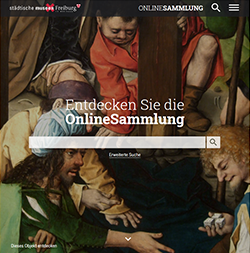Insights into the History of the Collection
Eugen Brandeis
23.9.1846 – 9.12.1930
Eugen Brandeis, who was born in Geisingen, had an eventful life: after studying mathematics in Karlsruhe and Freiburg (1863–1866) he entered military service (1866–1877). His first trip across the oceans as a representative of a Hamburg trading company took him as far as Haiti, where he subsequently found employment as an administrator at the Imperial Consulate. He went on to work in railway construction in Cuba and as an engineer in the construction of the Panama Canal, as well as at the German Consulate in Sydney, Australia. Brandeis travelled to Samoa in 1886, where he became a strategic advisor to the Tupua Tamasese, who had been appointed king by the German colonial government. However, as a result of the Samoan revolts, Brandeis left the island in 1889 and went to Berlin. One year later, he returned to the South Seas and served in various positions in the Imperial Commissariat of the protectorate of the Marshall Islands on the island of Jaluit. In 1892, he was appointed to the rank of Chief Justice of the German protectorate of the Bismarck Archipelago. From 1895 to 1898, he worked in the Colonial Department of the Foreign Office in Berlin before he was appointed Imperial Governor of the Marshall Islands in 1898. He held this position for two terms until 1906.
After his return to Berlin, he became the subject of a public debate about acts of violence and abuse of power in the German colonies due to the excessive use of corporal punishment in the Marshall Islands. The available archival sources suggest that he was given early retirement as a result of these allegations. After a brief assignment as a reservist in World War I, Eugen Brandeis moved from Berlin to Bad Säckingen in 1917, where he led a secluded life until his death in 1930.
Brandeis Donation
At the request of mayor Otto Winterer, Brandeis promised the museum an ethnological collection from the South Seas. The promised objects from the Marshall Islands arrived in Freiburg in 1900 and 1901. The actual credit for this, however, goes to his wife Antonie Brandeis (1868–1945), who did the collecting in the Marshall Islands and Nauru and who also provided an extensive written commentary on her collection.
One of the central artefacts in the Brandeis collection is the model of a war canoe, which he received as a gift from the Samoan Chief Mata’afa Iosefo (1832–1912) in 1898 and left to the museum two years later. Mata’afa Iosefo was a rival of King Tamasese Titimaea, appointed by the Germans, for whom Brandeis worked as a political adviser until 1889. After Chief Mata’afa had waged an armed revolt against the Tamasese government and was defeated, the German colonial administration banished him to political exile on the Marshall Islands in 1893. When Eugen Brandeis took office on Jaluit in 1898, he was responsible for him. Even if both men were previously political opponents, the gift, as well as letters and notes from the Brandeis couple, suggest that they established a friendly relationship. In order to assess this, of course, one would need to know Chief Mata’afa’s perspective. After his return to Samoa in 1898, he became King of Samoa, now with German support.
Ficke estimated the value of this outstanding collection to be in the region of 1,400 marks. There are still almost 300 objects from this collection in Freiburg today, and as such, it is considered one of the most important holdings in the Ethnological Collection. Since July 2020, a research project has been established to investigate the provenance of the Brandeis collection and, above all, the role of Antonie Brandeis as a collector.
Updated and revised by Godwin Kornes, research associate MNM, May 2021







